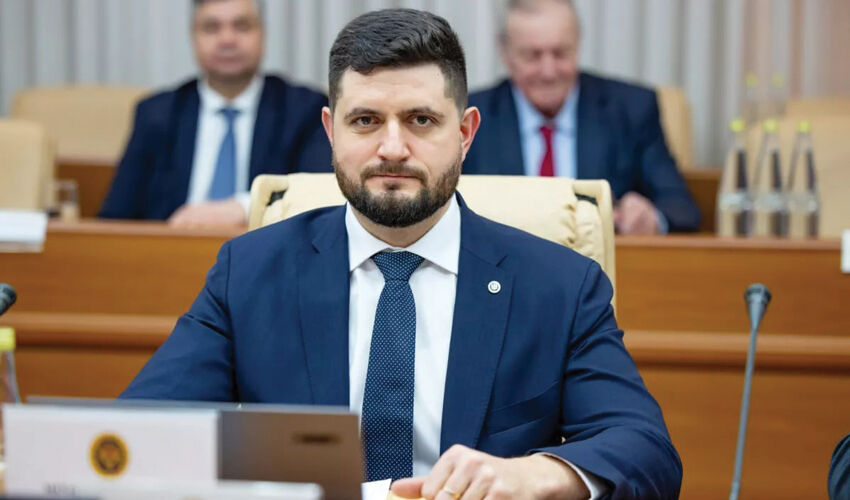
Dorin Junghietu
This was not done, and now the neighboring state faces a fine of 1 billion euros. This was announced by Romanian Energy Minister Bogdan Ivan. He explained that if these TPPs are decommissioned now, Romanian residents may face a shortage of electricity in winter, and it will have to be purchased abroad at “very high prices.
Based on an adequacy study conducted by an independent consultant commissioned by Transelectrica SA, the Romanian Ministry of Energy submitted a proposal to the European Commission on the necessity and feasibility of maintaining three power groups in commercial operation, as well as keeping the other two groups in technical reserve, in order to ensure the security of the energy system during peak consumption periods or in unforeseen situations.
In parallel, an updated restructuring plan has been submitted to the European Commission’s Competitiveness Directorate, postponing the closure of the coal-fired units until the end of 2029.
Otherwise, “if we close the coal-fired units at the Oltenia energy complex, we face a real risk of blackouts,” Bogdan Ivan said.
It is hard to say what decision the EU leadership will make, but the situation is not easy in any case. Why did this happen?
The PNRR envisioned that in parallel with the decommissioning of coal-fired plants, new gas and hydroelectric generating capacities would be put into operation. The EU allocated 300 million euros for this purpose.
For example, it was planned to build three gas-fired cogeneration plants at the expense of PNRR funds: in Constanta, Arad and Craiova. In the first two municipalities, work has already started and is more than 30% complete, while the project in Craiova failed due to two canceled tenders.
In addition, a project for the construction of a gas-fired power plant with an installed capacity of 430 MW was initiated by Romgaz in 2016 (with its own funds). However, for various reasons, it is still not completed. In September, Bogdan Ivan stated that the facility is 90% ready and can be completed in a maximum of nine months.
The Mintia power plant, with an installed capacity of 1,734 MW, is under construction – it is the largest private power project in Romania in the last 35 years. In constant operation, it should consume about a quarter of all the gas Romania currently consumes. It is an investment by Mass Global Energy Rom, part of Iraq’s Mass Group Holding. The tentative commissioning date is 2027.
Two more gas plants with public-private financing: “Ishalnitsa” – 850 MW installed capacity, estimated cost of 750 million euros, and “Turcheni” – 475 MW installed capacity, investment of 410 million euros, are under construction.
At the same time, former Energy Minister Sebastian Burduja wrote in social networks that 9 hydroelectric power plants with a total capacity of 700 MW are under construction in Romania, with investments of 12 billion Romanian lei (about 44 billion Moldovan lei), and that they are “98% ready”.
So, none of these projects are finished yet, and Romania has to decommission coal-fired power plants by the end of this year, according to commitments made under the PNRR.
The share of coal-fired power plants in Romania’s electricity generation has fluctuated between 16.51% and 22.89% in recent years, reaching a value of 19.69% in 2022, of which the Oltenia power complex accounted for almost 14%.
The total electricity production in Romania is now almost 6000 MW, which even in the fall period does not cover its consumption.
For example, on October 2, 2025, at 10:00, Romania imported 1233 MW of electricity (instantaneous value). The average purchase price on that day was €122 per MWh, the highest in Europe.
So, the neighboring country has problems, which means that Moldova also has problems, because last winter we bought up to 62% of the electricity we need from Romania.
Moldova buys electricity from Romania through two main channels: through bilateral contracts with Romanian suppliers, and on the Romanian exchange OPCOM. The state enterprise Energocom acts as the main importer, concluding contracts for electricity supply, including with Romanian companies such as Nuclearelectrica, Hidroelectrica, etc., and buying it on OPCOM.
The Moldovan Ministry of Energy explained that permanent contracts are the basis for basic supplies. And every day Energocom collects forecasts for the next day from distributors (Premier Energy and FEE Nord) and according to them buys the missing amount of energy on OPCOM.
At the same time, Romanian operators resell to us the electricity bought in Europe with a rather substantial markup. Last week Bogdan Ivan, commenting on accusations that Romania exports cheap electricity to Moldova while Romanians pay high bills for it, said: “This is a market where energy is traded, bought and sold by economic agents. I can tell you that, for example, in July, electricity was imported at 70-80 euros and sold at 110 euros (with 38-57% profitability – ed.). This is a simple principle of supply and demand”.
Moldova’s demand for electricity in winter is 800-1000 MW per day. Part of it (in the cold season) is produced by CHPPs, part by the hydroelectric power plant in Costeşti Stâncu and other producers.
The Ministry of Energy noted that this year quite a lot of solar and wind power plants were put into operation in the country. So, the share of energy from renewable sources in the total energy consumption of the country reached 40% in summer. The ministry expects that this year the average annual share of renewable energy sources will reach 27% against 16% in 2024.
Speaking at the St. Petersburg International Gas Forum on October 11, Gazprom CEO Alexei Miller said that the coming winter in Europe will be abnormally cold, such as it is once in 20 years.
If the forecast comes true, electricity consumption (and prices) will increase across the continent.
Another question. Will Romania even be able to provide Moldova with electricity in full, even at increased prices, if, indeed, the winter will be very cold?
Let us remind you that at present supplies from the EU to Moldova and Ukraine are limited by a limit of 2100 MW. And the own production in both countries does not cover the peak demand.
True, there is hope for the 400 kV Isaccea-Vulcanesti-Chisinau transmission line. Energy Minister Dorin Zhungietu said on October 10 that it is 90% ready. It should be put into operation by the end of 2025. Then there will be a little more peace of mind about the light in the coming winter.












